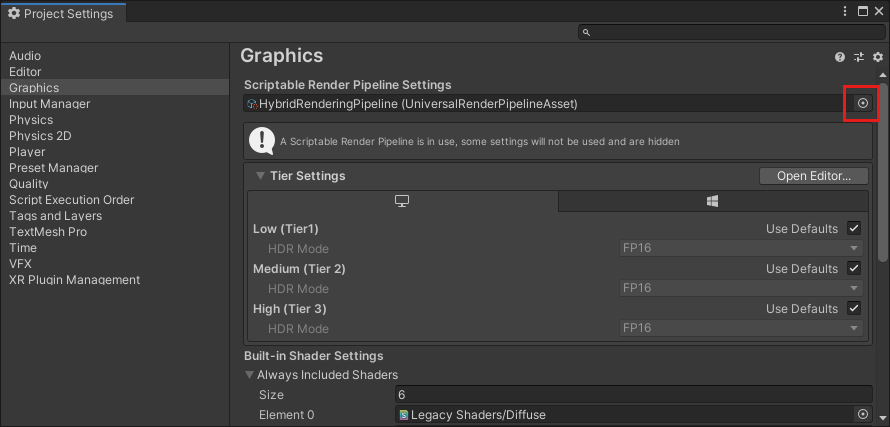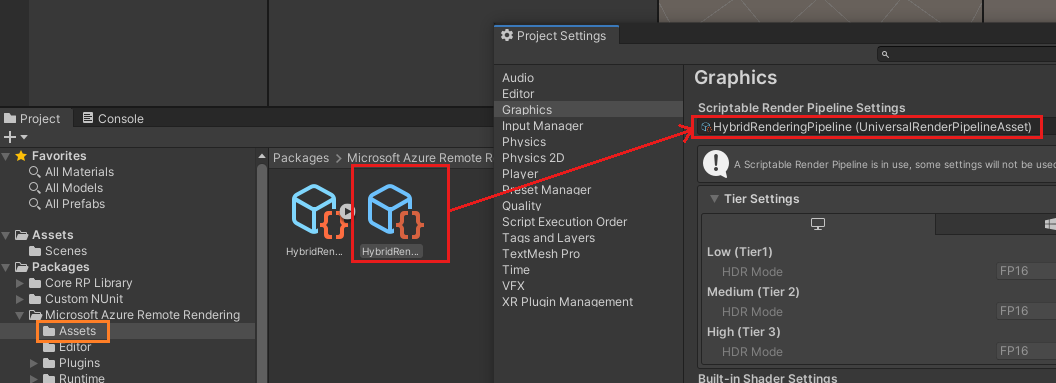Unity Render Pipelines
Remote Rendering works with both the Standard render pipeline ("built-in render pipeline") and the Universal render pipeline ("URP"). For performance reasons, it's recommended to use the built-in render pipeline, unless there are strong reasons that require URP.
Setup Universal Render Pipeline
To use the Universal render pipeline, its package has to be installed in Unity, and the HybridRenderingPipeline asset must be added to the Graphics settings.
- Install the Universal RP package (version 7.3.1 or newer) using Unity's Package Manager UI, as described in the Unity - Manual: Installing from a registry.
- Open Edit > Project Settings...
- Select Graphics from the left list menu
Change the Scriptable Rendering Pipeline setting to HybridRenderingPipeline.

Sometimes the UI doesn't populate the list of available pipeline types from the packages. If this issue occurs, the HybridRenderingPipeline asset must be dragged onto the field manually:

Note
If you're unable to drag and drop the HybridRenderingPipeline asset into the Render Pipeline Asset field (possibly because the field doesn't exist!), ensure your package configuration contains the
com.unity.render-pipelines.universalpackage.
Setup Standard Render Pipeline
Unlike for the Universal render pipeline, there are no extra setup steps required for the Standard render pipeline to work with ARR. Instead, the ARR runtime sets the required render hooks automatically.